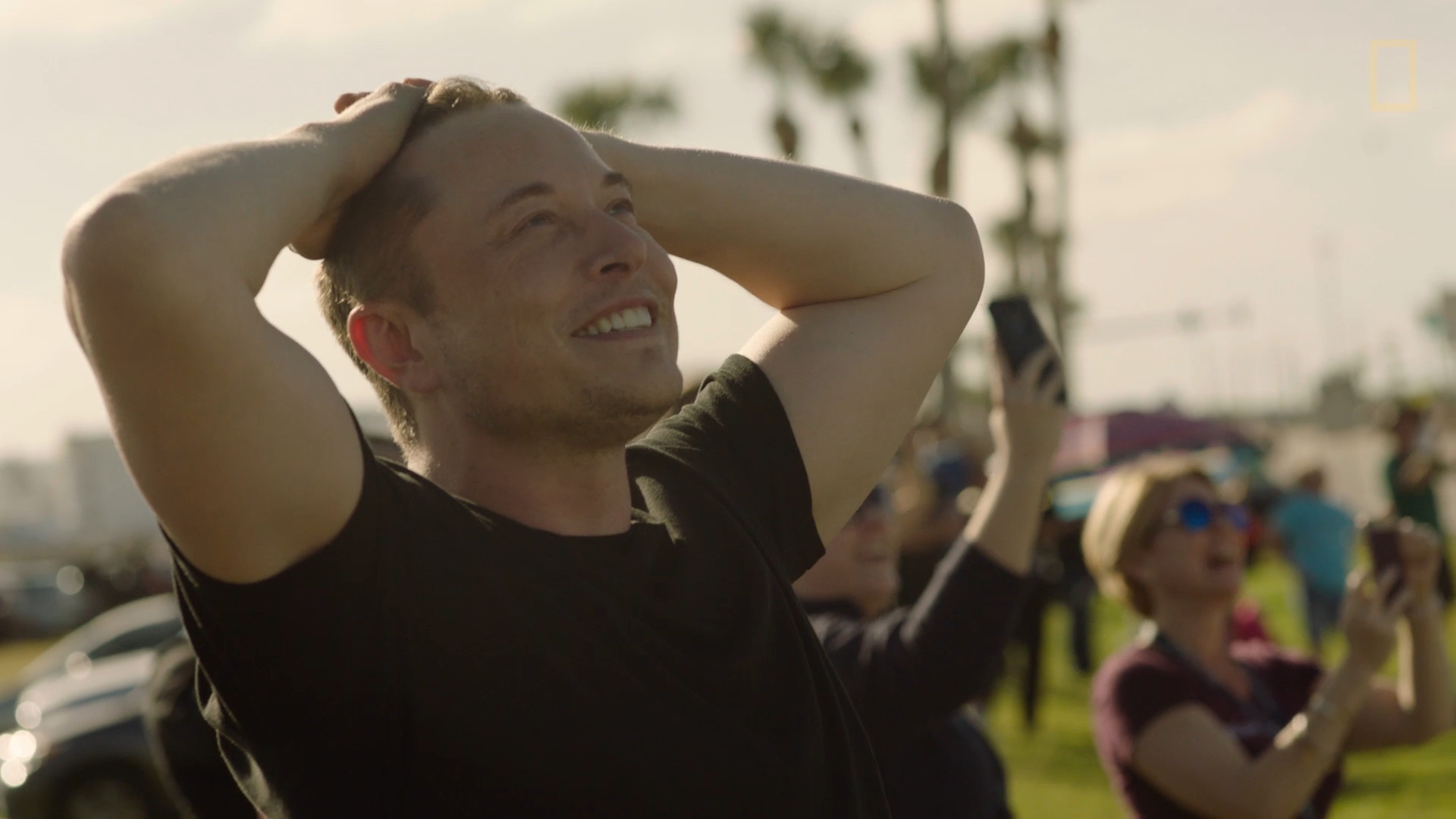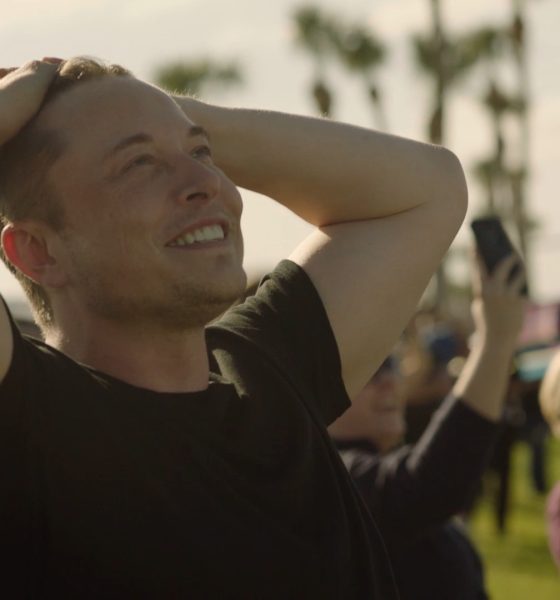

News
Tesla community celebrates 49 years of Elon Musk’s relentless pursuit of dreams and sustainability
Tesla and SpaceX CEO Elon Musk is celebrating his 49th birthday today, and both the electric car and space community are celebrating a life that has so far been dedicated to the pursuit of dreams and sustainability. Musk’s journey has been arduous, but his sheer determination has played a notable part in accelerating today’s shift towards renewables and interplanetary endeavors.
It is said that discomfort is something that could harness the best in a person. For Musk, this does seem to be the case. As a teenager, Musk fled to Canada with around $2,000 to his name, and he lived off manual labor for some time to make ends meet. Finishing college, Musk was similar to other graduates, being $100,000 in debt. Yet despite this, Musk was a dreamer, and his fascination with space, tech, and sustainability were intact.
Musk’s first successes came in the tech sector, starting with Zip2, a directory service that could, in a way, be considered as a predecessor of programs like Google Maps. He then went on to online banking with X.com, which, after a merger with Confinity, was sold to eBay as PayPal. Musk’s earnings from the sale of PayPal ultimately helped start SpaceX, a private space company. It did not take long before Musk became the Chairman of the Board of Directors of Tesla, an electric vehicle company.
Elon Musk’s successes today prove that hard work is needed for real results. Previous interviews have mentioned Musk remarking that projects such as mass producing the Tesla Model 3 or creating reusable rockets is difficult. And it’s true. Musk is arguably one of the most hands-on CEOs in the industry today, at some points in recent years even bunking on Tesla’s Fremont Factory to help out the company in ramping vehicle production.
But all this hard work also results in a lot of hard-won victories. When Elon Musk joined Tesla as the company’s primary investor, and as he took the reins of the company as its CEO during the financial crisis, the idea of an electric car company being the most valuable automaker in the world by market cap was farfetched. But this is exactly what has happened over the years. It took a ton of hard work with each vehicle release, but there is no denying the fact that Tesla today is a force to be reckoned with in the auto sector.
The same goes for SpaceX. The private space firm could be considered as Musk’s true labor of love, being a company that is currently pursuing Musk’s personal childhood dream of making humans into an interplanetary species. Just like Tesla, the road has not been easy for SpaceX, with the company teetering over the edge of bankruptcy amidst the multiple failures of its first custom-designed rocket, the Falcon 1. The Falcon 1 was a humble rocket, and it took three failures before it was able to reach orbit nominally.
The victory of the Falcon 1 ultimately paved the way for the emergence of SpaceX’s resident workhorse, the Falcon 9. Equipped with nine Merlin Engines, the Falcon 9 marked its place in space history through its sheer reliability, and later on, its unique reusability. The Falcon 9, as well as its upgraded configuration, the Falcon Heavy, stand as the pinnacle of rockets today, with their capability to be reflown and reused after landing on land and at sea.
If there is one thing that is similar among Elon Musk’s primary companies and the CEO himself, it is the fact that they move very fast. Tesla was able to outpace the EV competition since its vehicles, which were the benchmark in performance and tech to begin with, are moving targets for competitors. SpaceX is the same way. Despite the dominance of the Falcon 9 in terms of reusability and cost, the company is now looking towards its next great project — Starship — a massive rocket that is designed for actual interplanetary travel.
Ultimately, it is quite fascinating to see what Elon Musk has accomplished over his 49 years. But what is even more exciting is that there is more to come. Tesla is only getting started in the energy sector, and SpaceX looking to even higher heights. The next few years for Musk would most definitely be even more compelling.

Elon Musk
Elon Musk’s X will start using a Tesla-like software update strategy
The initiative seems designed to accelerate updates to the social media platform, while maintaining maximum transparency.

Elon Musk’s social media platform X will adopt a Tesla-esque approach to software updates for its algorithm.
The initiative seems designed to accelerate updates to the social media platform, while maintaining maximum transparency.
X’s updates to its updates
As per Musk in a post on X, the social media company will be making a new algorithm to determine what organic and advertising posts are recommended to users. These updates would then be repeated every four weeks.
“We will make the new 𝕏 algorithm, including all code used to determine what organic and advertising posts are recommended to users, open source in 7 days. This will be repeated every 4 weeks, with comprehensive developer notes, to help you understand what changed,” Musk wrote in his post.
The initiative somewhat mirrors Tesla’s over-the-air update model, where vehicle software is regularly refined and pushed to users with detailed release notes. This should allow users to better understand the details of X’s every update and foster a healthy feedback loop for the social media platform.
xAI and X
X, formerly Twitter, has been acquired by Elon Musk’s artificial intelligence startup, xAI last year. Since then, xAI has seen a rapid rise in valuation. Following the company’s the company’s upsized $20 billion Series E funding round, estimates now suggest that xAI is worth tens about $230 to $235 billion. That’s several times larger than Tesla when Elon Musk received his controversial 2018 CEO Performance Award.
As per xAI, the Series E funding round attracted a diverse group of investors, including Valor Equity Partners, Stepstone Group, Fidelity Management & Research Company, Qatar Investment Authority, MGX, and Baron Capital Group, among others. Strategic partners NVIDIA and Cisco Investments also continued support for building the world’s largest GPU clusters.
News
Tesla FSD Supervised wins MotorTrend’s Best Driver Assistance Award
The decision marks a notable reversal for the publication from prior years, with judges citing major real-world improvements that pushed Tesla’s latest FSD software ahead of every competing ADAS system.

Tesla’s Full Self-Driving (Supervised) system has been named the best driver-assistance technology on the market, earning top honors at the 2026 MotorTrend Best Tech Awards.
The decision marks a notable reversal for the publication from prior years, with judges citing major real-world improvements that pushed Tesla’s latest FSD software ahead of every competing ADAS system. And it wasn’t even close.
MotorTrend reverses course
MotorTrend awarded Tesla FSD (Supervised) its 2026 Best Tech Driver Assistance title after extensive testing of the latest v14 software. The publication acknowledged that it had previously criticized earlier versions of FSD for erratic behavior and near-miss incidents, ultimately favoring rivals such as GM’s Super Cruise in earlier evaluations.
According to MotorTrend, the newest iteration of FSD resolved many of those shortcomings. Testers said v14 showed far smoother behavior in complex urban scenarios, including unprotected left turns, traffic circles, emergency vehicles, and dense city streets. While the system still requires constant driver supervision, judges concluded that no other advanced driver-assistance system currently matches its breadth of capability.
Unlike rival systems that rely on combinations of cameras, radar, lidar, and mapped highways, Tesla’s FSD operates using a camera-only approach and is capable of driving on city streets, rural roads, and freeways. MotorTrend stated that pure utility, the ability to handle nearly all road types, ultimately separated FSD from competitors like Ford BlueCruise, GM Super Cruise, and BMW’s Highway Assistant.
High cost and high capability
MotorTrend also addressed FSD’s pricing, which remains significantly higher than rival systems. Tesla currently charges $8,000 for a one-time purchase or $99 per month for a subscription, compared with far lower upfront and subscription costs from other automakers. The publication noted that the premium is justified given FSD’s unmatched scope and continuous software evolution.
Safety remained a central focus of the evaluation. While testers reported collision-free operation over thousands of miles, they noted ongoing concerns around FSD’s configurable driving modes, including options that allow aggressive driving and speeds beyond posted limits. MotorTrend emphasized that, like all Level 2 systems, FSD still depends on a fully attentive human driver at all times.
Despite those caveats, the publication concluded that Tesla’s rapid software progress fundamentally reshaped the competitive landscape. For drivers seeking the most capable hands-on driver-assistance system available today, MotorTrend concluded Tesla FSD (Supervised) now stands alone at the top.
News
Elon Musk’s Grokipedia surges to 5.6M articles, almost 79% of English Wikipedia
The explosive growth marks a major milestone for the AI-powered online encyclopedia, which was launched by Elon Musk’s xAI just months ago.

Elon Musk’s Grokipedia has grown to an impressive 5,615,201 articles as of today, closing in on 79% of the English Wikipedia’s current total of 7,119,376 articles.
The explosive growth marks a major milestone for the AI-powered online encyclopedia, which was launched by Elon Musk’s xAI just months ago. Needless to say, it would only be a matter of time before Grokipedia exceeds English Wikipedia in sheer volume.
Grokipedia’s rapid growth
xAI’s vision for Grokipedia emphasizes neutrality, while Grok’s reasoning capabilities allow for fast drafting and fact-checking. When Elon Musk announced the initiative in late September 2025, he noted that Grokipedia would be an improvement to Wikipedia because it would be designed to avoid bias.
At the time, Musk noted that Grokipedia “is a necessary step towards the xAI goal of understanding the Universe.”
Grokipedia was launched in late October, and while xAI was careful to list it only as Version 0.1 at the time, the online encyclopedia immediately earned praise. Wikipedia co-founder Larry Sanger highlighted the project’s innovative approach, noting how it leverages AI to fill knowledge gaps and enable rapid updates. Netizens also observed how Grokipedia tends to present articles in a more objective manner compared to Wikipedia, which is edited by humans.
Elon Musk’s ambitious plans
With 5,615,201 total articles, Grokipedia has now grown to almost 79% of English Wikipedia’s article base. This is incredibly quick, though Grokipedia remains text-only for now. xAI, for its part, has now updated the online encyclopedia’s iteration to v0.2.
Elon Musk has shared bold ideas for Grokipedia, including sending a record of the entire knowledge base to space as part of xAI’s mission to preserve and expand human understanding. At some point, Musk stated that Grokipedia will be renamed to Encyclopedia Galactica, and it will be sent to the cosmos.
“When Grokipedia is good enough (long way to go), we will change the name to Encyclopedia Galactica. It will be an open source distillation of all knowledge, including audio, images and video. Join xAI to help build the sci-fi version of the Library of Alexandria!” Musk wrote, adding in a later post that “Copies will be etched in stone and sent to the Moon, Mars and beyond. This time, it will not be lost.”








